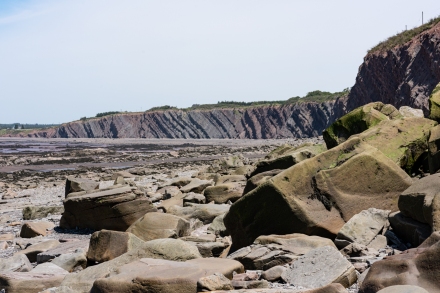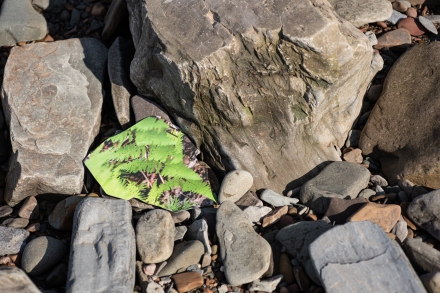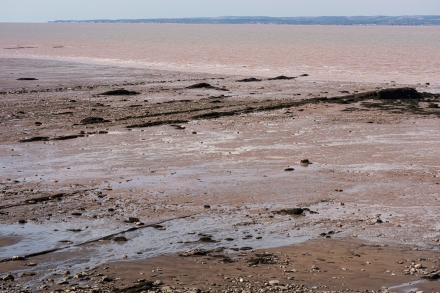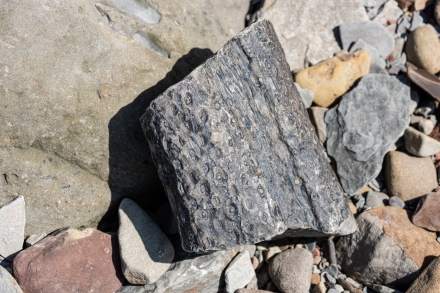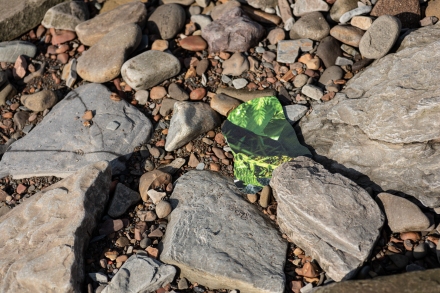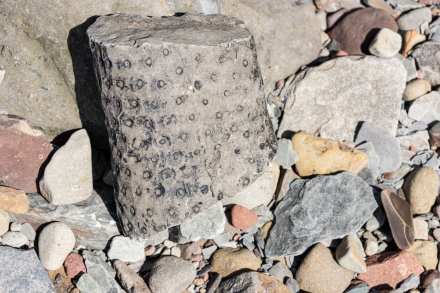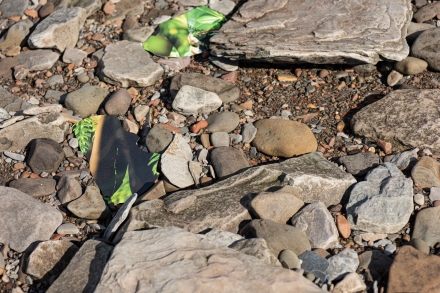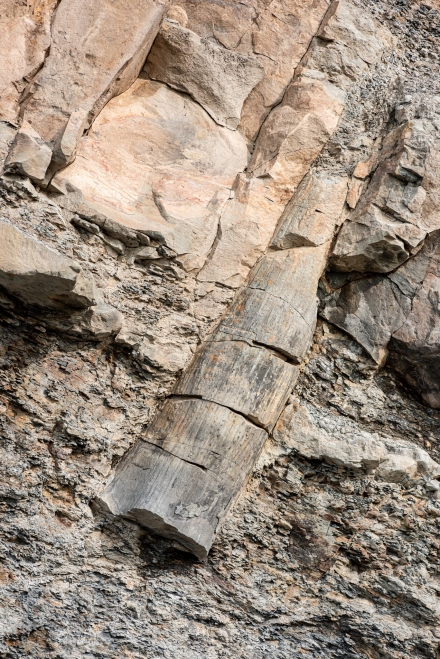
Palaeontologists understand fossils to be “the evidence of past life.” I like that this definition also applies to photographs.
On the ragged eastern edge of the North American continent, on the northern tine of the Bay of Fundy’s forked tongue, a 15-kilometre-long time capsule lies half-sunken in the earth.
The Joggins Fossil Cliffs have been designated a UNESCO World Heritage Site because of their unparalleled, unbroken record of past life: a 15-kilometre stretch of coastline running north-south, where each kilometre of cliffs equals one million years of stacked-up, fossilized surfaces of the earth. Standing below the cliffs at low tide, you find yourself beside a gargantuan earth-camera that has meticulously photographed its wetland environments for 15 million years.
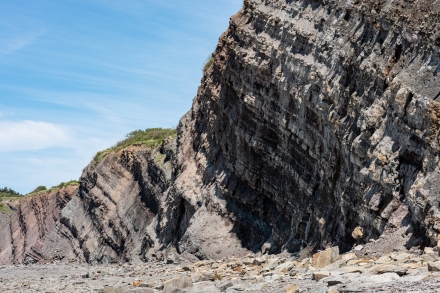
The swamp environments captured in Joggins’ cliffs document a critical period of earth history, the Carboniferous (Latin for “coal-bearing”). This time period, which lasted between 359 and 299 million years ago, was so named as it saw the greatest amount of coal production in planetary history. Countless generations of wetland plants sank into deep basins of the earth, and subsequently were compressed and heated by earth processes over millions of years. Fully carbonized, these fossil swamps would form the instigating element of the Industrial Revolution, and our present-day climate crisis. Joggins encapsulates a later time-slice of the Carboniferous, a period between 325 and 310 million years ago.
Alongside their important relation to our presently fraught condition of global climate change, the Joggins Fossil Cliffs also hold an ancestral chapter in the stories of life’s evolution on earth. The cliffs here have preserved the earliest known instance in the fossil record of a creature with a backbone able to live its entire life on land, nestled in the sandstone cast of a hollowed-out tree stump.
This past fall I had the immense privilege to be featured as the Joggins Fossil Institute’s 2020 Artist-in-Residence. Through this six-week residency in Joggins, as well as through a subsequent three-week residency in nearby Parrsboro as a Main & Station Nonesuch residency artist, I developed a geo-photomontage project entitled “Camera Sigillaria.” This investigation studied the relationships between fossils and photographs as the fragmentary imprints of past times.
Through subsequent posts on this blog, I will recount what I found and felt through this exploration of cameras and earth-chambers as the carriers of meaning.
My explorations would not have been possible without the hospitality and encouragement of the people of Cumberland County, all the staff at the Joggins Fossil Centre, the Main & Station Nonesuch Kickshaws residency organizers Judith Bauer and Harvey Lev, the staff at Parrsboro’s Fundy Geological Museum, and my friends and family. I extend my sincere gratitude to ArtsNS, the Municipality of the County of Cumberland and the Alberta Foundation for the Arts for their financial support with this project.

